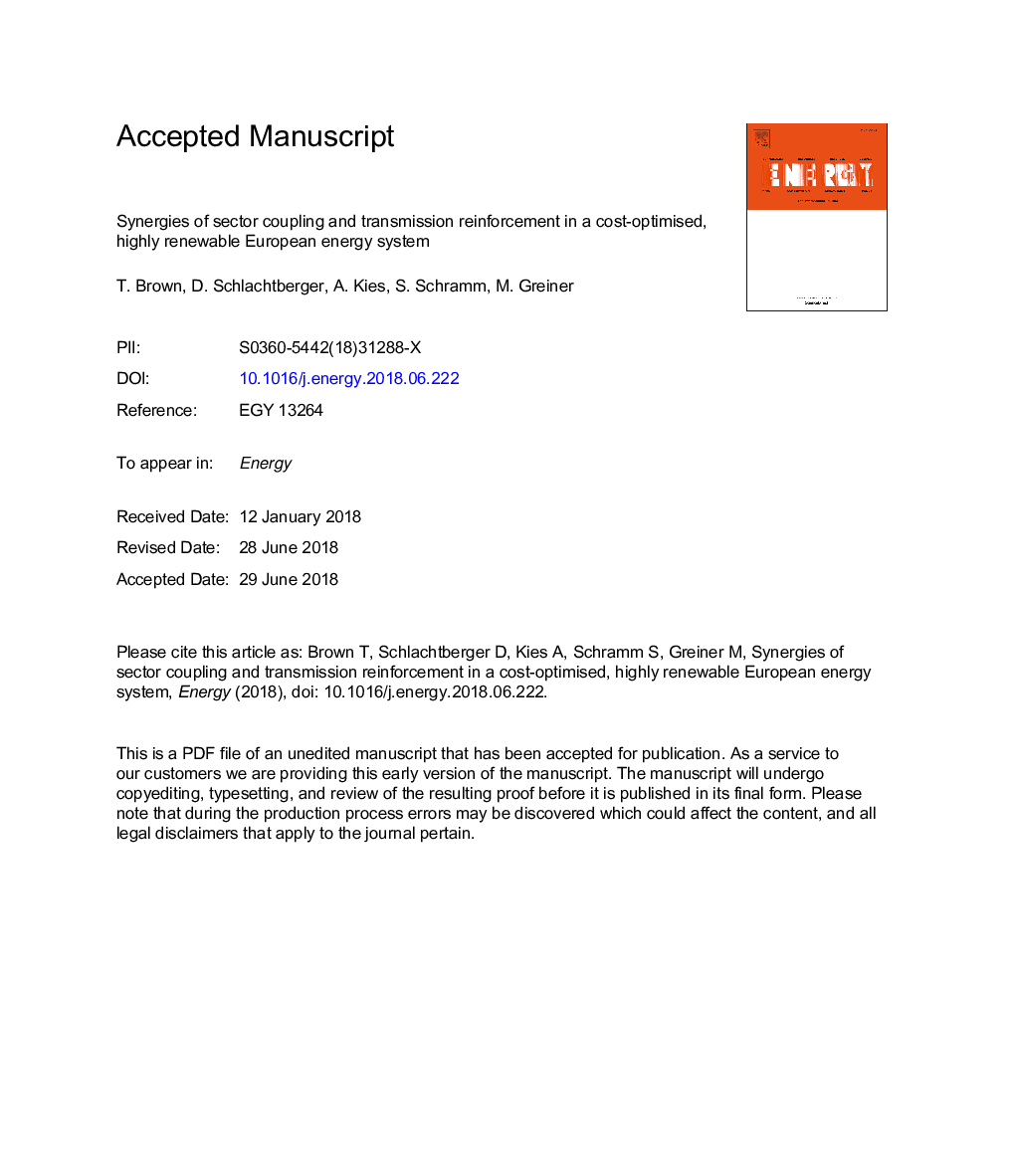| Article ID | Journal | Published Year | Pages | File Type |
|---|---|---|---|---|
| 8070982 | Energy | 2018 | 41 Pages |
Abstract
There are two competing concepts in the literature for the integration of high shares of renewable energy: the coupling of electricity to other energy sectors, such as transport and heating, and the reinforcement of continent-wide transmission networks. In this paper both cross-sector and cross-border integration are considered in the model PyPSA-Eur-Sec-30, the first open, spatially-resolved, temporally-resolved and sector-coupled energy model of Europe. Using a simplified network with one node per country, the cost-optimal system is calculated for a 95% reduction in carbon dioxide emissions compared to 1990, incorporating electricity, transport and heat demand. Flexibility from battery electric vehicles (BEV), power-to-gas units (P2G) and long-term thermal energy storage (LTES) make a significant contribution to the smoothing of variability from wind and solar and to the reduction of total system costs. The cost-minimising integration of BEV pairs well with the daily variations of solar power, while P2G and LTES balance the synoptic and seasonal variations of demand and renewables. In all scenarios, an expansion of cross-border transmission reduces system costs, but the more tightly the energy sectors are coupled, the weaker the benefit of transmission reinforcement becomes.
Keywords
Related Topics
Physical Sciences and Engineering
Energy
Energy (General)
Authors
T. Brown, D. Schlachtberger, A. Kies, S. Schramm, M. Greiner,
